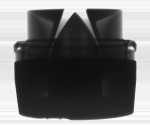Hello all, I need to recone a JBL E140. Recone costs about 200 euro's at Thomann Germany.
But I have a recone for a 2225 on stock and it obviously fits well. Same coilsize etc..
Now i know that this is unusual but hey, i'm a little short on money right now.
Could this work out right?



 Reply With Quote
Reply With Quote







